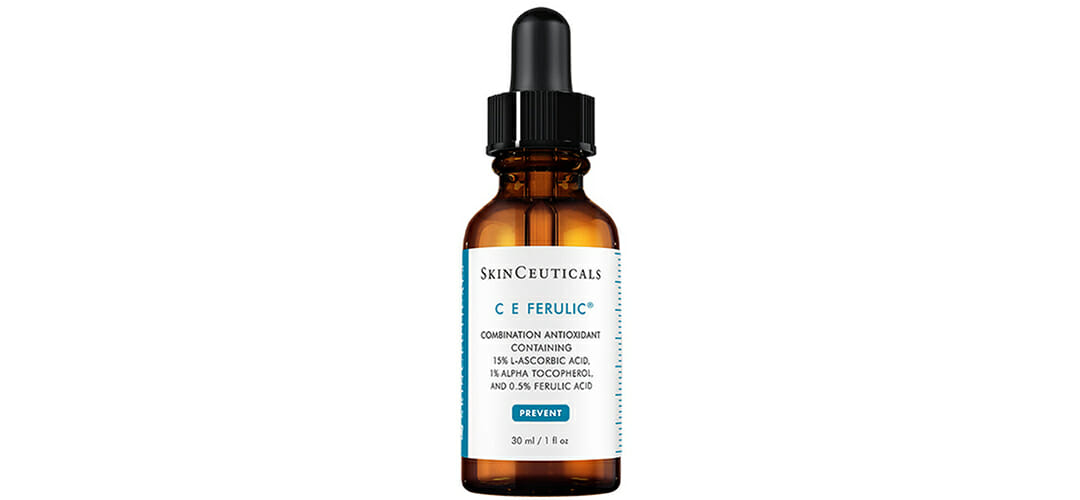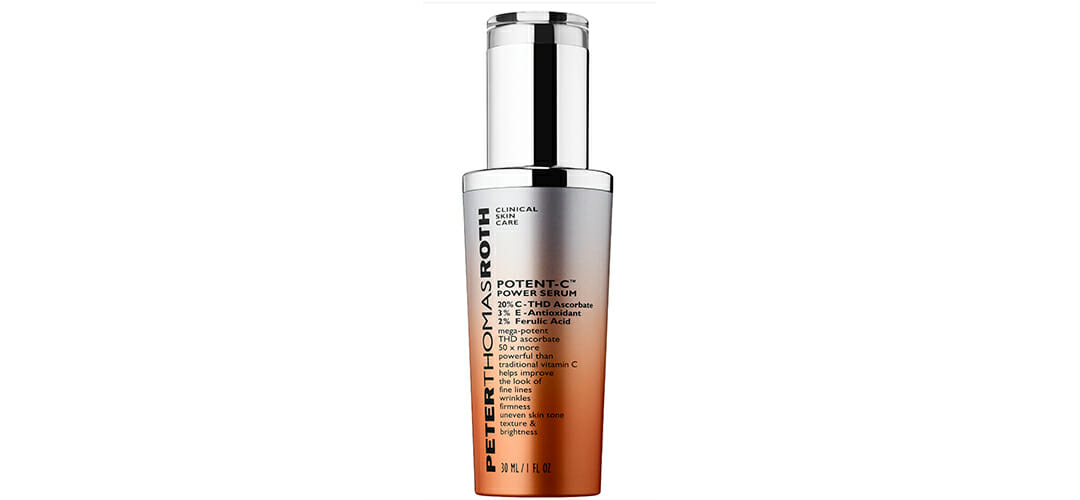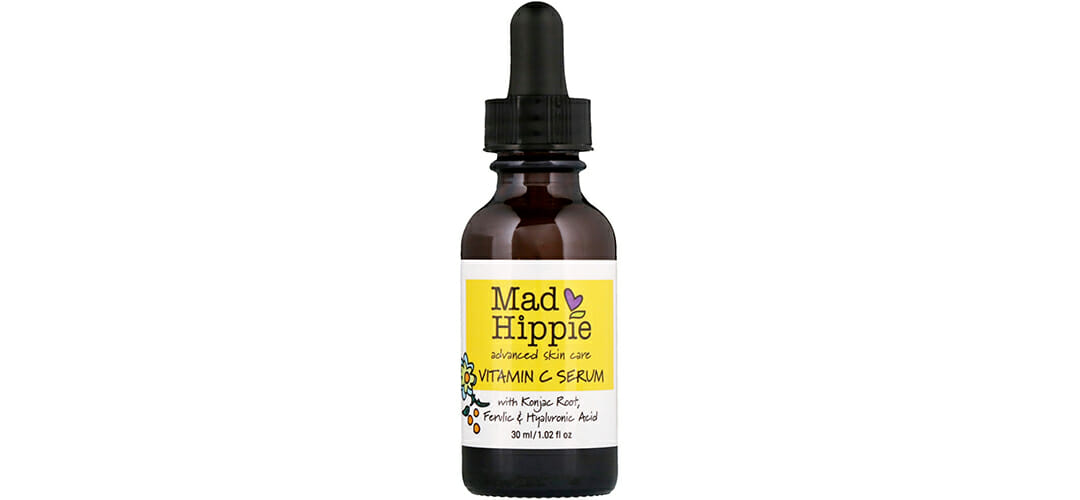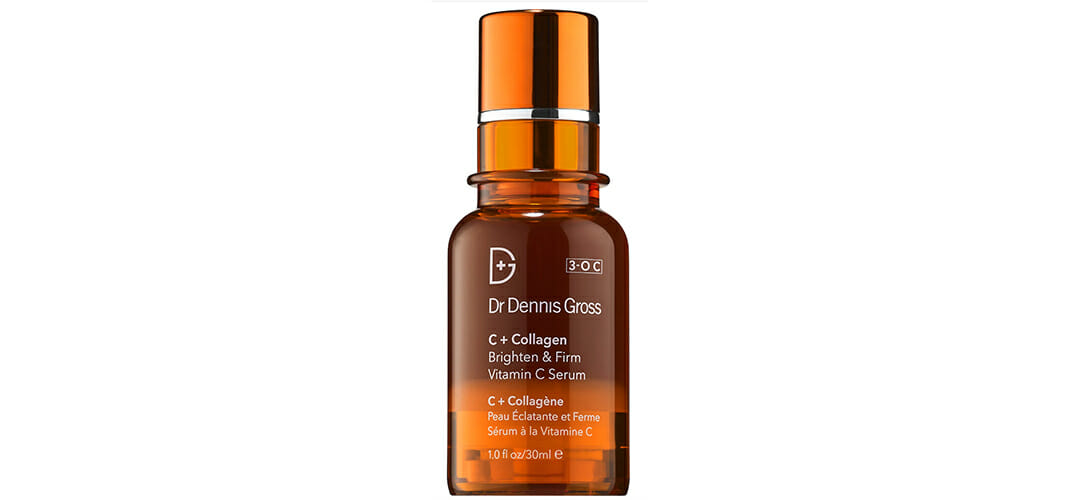I’ve said this before but vitamin C serums have become the Little Black Dress of skincare: It seems like everyone has one, they flatter just about every skin tone, and they just plain work! I review a lot of serums here but realized that some people who are new to skincare and just building their routine might need a refresher on what vitamin C types are and how it benefits your skin.
So we’re going back to basics with this beginner’s guide to vitamin C types!
Know Your Forms (and What Works Best for Skin)
When considering a vitamin C serum, the right form of vitamin C will be available in concentrations in which it has been proven to work; have clinical data to support its collagen-building and/or sunspot-fighting and/or UV-free radical-scavenging abilities; penetrate the skin well, and meet your lifestyle in terms of stability. Meaning, if you’re the type of person who spends ample money on skincare and uses it frequently, go ahead with the L-ascorbic acid. On the other hand, if you’re more frugal and spread out a bottle to last 2-3 months (or more), sodium ascorbyl phosphate makes more sense. Here is a rundown of the various vitamin c derivatives on the market today:
L-Ascorbic Acid: Best for Using in the Recommended Concentrations (15% or Higher)

L-ascorbic acid is the most common form of vitamin C types used in skin care. It is water-soluble. The biggest advantage to L-ascorbic acid is that its concentrations are well-established in skin care products; most studies that show efficacy use L-ascorbic acid in concentrations of 15% or higher. For this reason, products like the patented Skinceuticals CE Ferulic contain 15% L-ascorbic acid. The effects of L-ascorbic acid also last several days: It has been shown that topical application of Cellex C, with 10% L-ascorbic acid, results in the presence of L-ascorbic acid in the skin for 2-3 days after application, with an increase in the level of collagen as well. The final benefit of L-ascorbic acid is that it, in and of itself, has value to the skin, without having to be converted to another form within the skin. An issue with vitamin C derivatives is that they typically need to be converted to vitamin C within the skin. For instance, ascorbyl glucosamine needs to be broken down into L-ascorbic acid and glucosamine by enzymes found naturally within the skin in order to have any activity at all. On the other hand, L-ascorbic acid on its own has been shown to have effects, without needing to have any sort of breakdown or “activation” within the skin. The issue with L-ascorbic acid is that it is notoriously unstable, which is exacerbated in the presence of light, heat, and air (Die Pharmazie). In particular, L-ascorbic acid is reversibly oxidized to L-dehydroascorbic acid, at which point it may then be irreversibly oxidized to diketogluconic acid, which is inactive. For this reason, numerous substitutes to L-ascorbic acid are used in skin care.
Tetrahexyldecyl Ascorbate: Best for Really Tired, Aging Skin

Tetrahexyldecyl ascorbate is a form of vitamin C that is oil-soluble. What makes THD ascorbate special is that it has been shown in peer-reviewed studies to penetrate both the epidermis (the uppermost layer of skin) and dermis (the deepest layer of skin) (Clinics in Dermatology, 2008). I cannot find any studies that demonstrate other forms of vitamin C to penetrate the skin this far.
Like all of the other vitamin C derivatives on the skin, THD ascorbate has to be converted to L-ascorbic acid within the skin to be active. Which means that 20% THD ascorbate is more likely to effectively be (I’m guessing) 10-15% L-ascorbic acid. That said, it’s also more stable than L-ascorbic acid, so you’re likely getting less potency from a 20% THD ascorbate serum than a 15% L-ascorbic acid serum when you first open the bottle, and more potency when you get towards the bottom of the bottle. (Tradeoffs, I tell you, trade-offs.)The product with the highest concentration of THD ascorbate I know of is Peter Thomas Roth Potent-C Serum, with a whopping 20% THD ascorbate.
Sodium Ascorbyl Palmitate: Best for Budget

Sodium ascorbyl palmitate is a water-soluble form of L-ascorbic acid; it is L-ascorbic acid combined with palmitic acid, a fatty acid, and – you’ll never guess – sodium. It’s more stable and bioavailable than Magnesium Ascorbyl Phosphate (MAP), Ascorbyl Palmitate, and Ascorbic Acid (among other vitamin C derivatives) (Journal of the Chemical Society of Pakistan, International Journal of Pharmaceutics). For this reason, it’s best for the budget — if you’re the type of skincare consumer who likes to draw out a bottle of serum for two or three months, choosing one with SAP is better than one with LAA or THD ascorbate. Cosmetic chemists like sodium ascorbyl palmitate because it is stable in both water-in-oil emulsions and oil-in-water emulsions, unlike ascorbyl palmitate. It also is more active at a higher range of pH levels than L-ascorbic acid (International Journal of Cosmetic Science), which has to be formulated at a pH under 4 for maximum results. For these reasons, you’ll see sodium ascorbyl palmitate in a number of products, even though its concentrations aren’t competitive (I’ve never seen a 20%+ SAP serum). There’s really no reason to choose SAP over other forms of vitamin C, unless you want to really stretch out a bottle. The best one I know of is Mad Hippie Vitamin C Serum.
3-0-Ethyl Ascorbic Acid and Ascorbyl Glucosamine: Best for Skin Brightening and Sunspots

The studies on each of these stabilized vitamin C derivatives are limited but promising. In a clinical skin lightening test, a solution containing just 2% 3-0-ethyl ascorbic acid was found to improve skin whitening and radiance after just 28 days of twice-daily application (Cosmetics and Toiletries). I like Vitabrid and Dr. Dennis Gross C+ Collagen Brighten & Firm Vitamin C Serum. On the other hand, ascorbyl glucosamine is less common. The combination of ascorbyl glucosamine and niacinamide was shown to reduce facial hyperpigmentation in Japanese and Caucasian subjects with facial hyperpigmentation in two double-blind, vehicle-controlled, split-face, left-right randomized clinical studies (source: Dermatology).
Why Vitamin C is so Effective When Paired with Vitamin E
According to Dr. Leslie Baumann’s Cosmetic Dermatology textbook, vitamin C and vitamin E are network antioxidants that have been found to synergistically enhance the power of one another. (When one antioxidant is depleted, it can essentially “borrow” an electron from the other antioxidant to renew itself, and vice versa). Vitamins C and E as L-ascorbic acid and tocopheryl acetate have also been reported by Djerassi et. al. to prevent the formation of carcinogenic nitrosamines. Vitamin C and vitamin E have also been shown to enhance the photoprotective effects of sunscreen, as vitamin C has been reported to enhance UVA protection, whereas vitamin E is more effective against UVB radiation. Lastly, vitamin C has also been found to decrease hyperpigmentation, although a study in the International Journal of Dermatology found that 4% hydroquinone was more effective in treating melasma than vitamin C as L-ascorbic acid. However, a separate study, also in the International Journal of Dermatology, found that combination therapy of 4% hydroquinone, vitamin C, vitamin E, and 10% glycolic acid was effective in treating signs of hyperpigmentation. Vitamin E is naturally produced in sites rich in sebaceous glands, as it is physiologically delivered to the surface via secretion of sebum, according to this article in the journal Skin Pharmacology and Physiology. According to a second research study, this study by Packer and Valacchi, vitamin E may be the predominant natural antioxidant both in murine and human skin, and it shows a characteristic gradient with lower levels towards the outer stratum corneum layers.
Can You Pair Vitamin C with AHAs/BHAs and Retinol?
It has been reported in the Journal of Dermatological Surgery that vitamin C and its derivatives should be formulated at a pH under 3.5 in order to allow the vitamin C to enter the skin (at this pH level, the molecule is protonated and thus can penetrate the skin). So glycolic acid, salicyclic acid, and other alpha and beta hydroxy acids should be fine.
Unfortunately, vitamin C types (as ascorbic acid) should not be used with retinoids. The pH optimal for retinol esterification (a process necessary for its activation in the skin) is between 5.5-6.0, as mentioned in the Journal of Investigative Dermatology. This doesn’t mean that products containing vitamin A and C don’t work – many products I love contain both! – but it does indicate that using them separately may be a bit more beneficial. Numerous non-acidic derivatives of vitamin C exist, but many of them must be converted to L-ascorbic acid within the skin in order to be effective, so retinoids still are not as effective in their presence. These include magnesium ascorbyl phosphate, as reported in the journal Photochemistry and Photobiology, and ascorbyl glucoside, as demonstrated by research from Hayashibara International.
I prefer vitamin C use in the morning, with retinoids at night.
Bottom Line
Now that you’re a vitamin C types expert, it’s time to find your perfect serum. Here are some of my favorites.

